I regularly make kefir, a fermented milk drink.
Wikipedia article about kefir.
fermentation
- put 50-100g of kefir grains in a glass jar larger than 1L.
- pour in 1L of milk.
- close the top of the glass jar.
- put the glass jar in a warm (about 22C) dark place for about 24 hrs.
Kefir is ready when it has thickened and started to separate. you may see some pockets of clear liquid in the jar (usually more at the bottom of the jar).
When you think that it is ready: process it straight away, or slow fermentation by keeping the jar of fermented kefir in the fridge until you are ready to use it.
Process it before we need it then we may find that we have too much of the stuff: it grows!
Some clear liquid after fermentation is normal. Lots of clear liquid suggests too long a fermentation; not a problem, still good to consume.
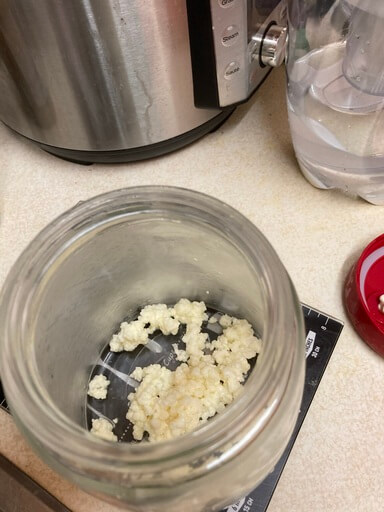
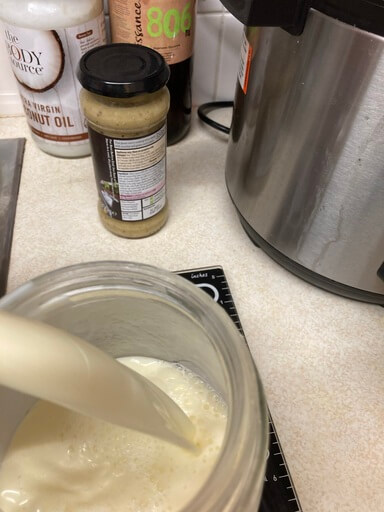
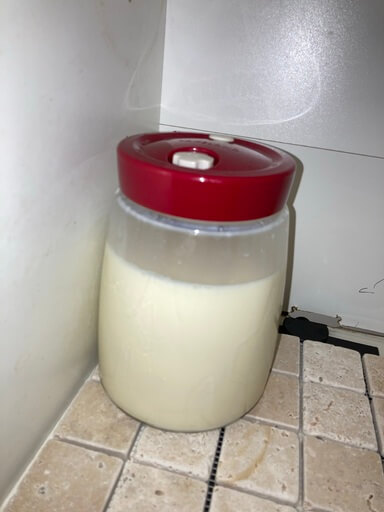
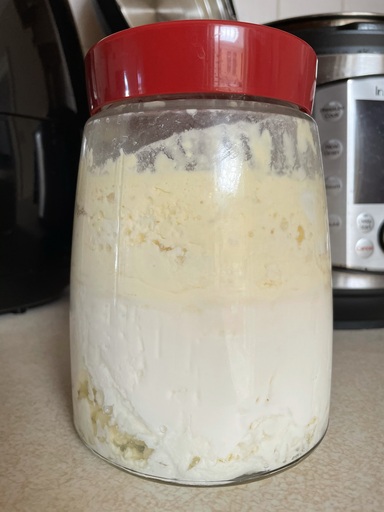
processing
Kefir grains are mainly on the top of the ferment.
- sieve the kefir liquid into a storage jar.
- use a wooden spoon to gently work the liquid through the sieve.
- remove the grains from the sieve to speed up sieving the liquid through.
- rinse the kefir grains in the sieve and reuse forever.
We will have more kefir grains than we started with. Give your excess grains away, or eat them, or bin then, or start your kefir dairy. Kefir is alive, it grows!
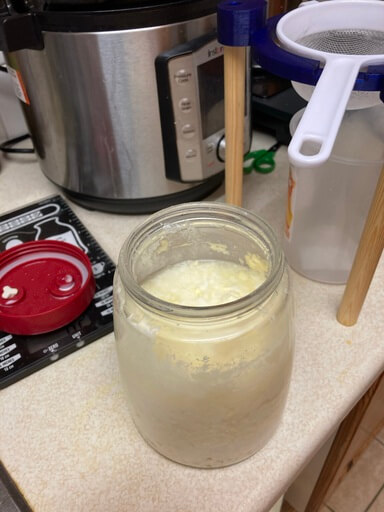
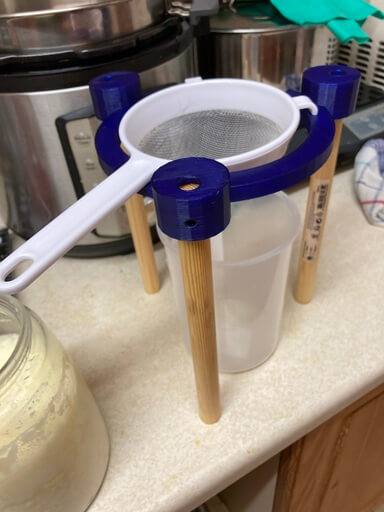


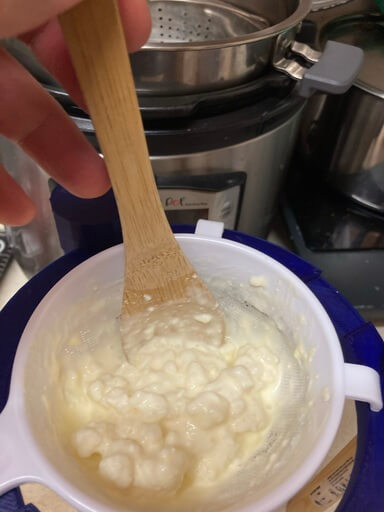
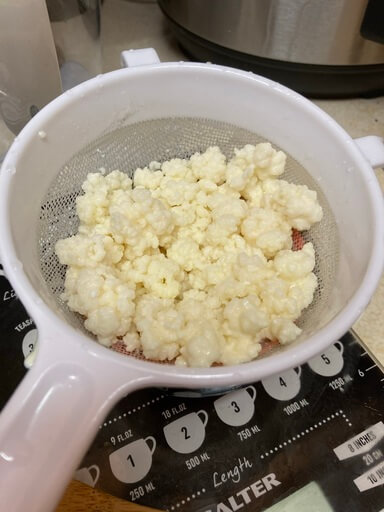
I avoid metal utensils and containers when fermenting, processing, and storing kefir.
use
Store the kefir in a fridge and use as you want. I use kefir as the main liquid in smoothies; I also drink it, or use it instead of milk when cooking. I keep mine in the fridge for a week or so without problems.